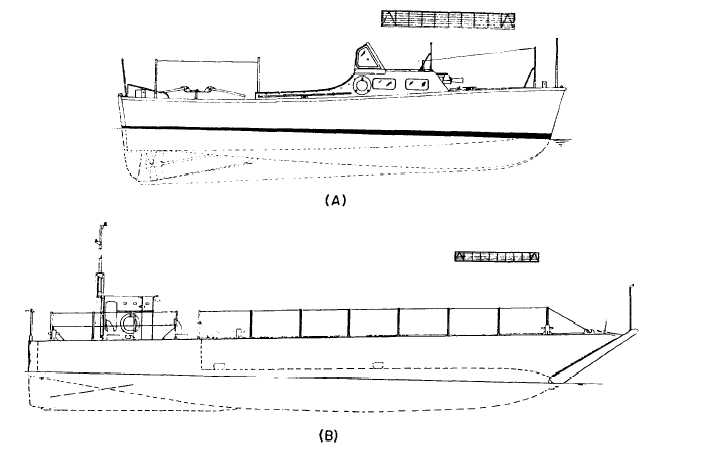| |
of the hull on either side of the keel up to where the sides
begin.
The most forward part of the boat is the stem. The
outboard part of the stem that is below the surface is
called the cutwater. Starting just abaft the stem and
running fore and aft on both sides, there is usually a
half-rounded fender, called the beading. Abaft the stem
is a ring (hoisting eye) and cleats, used for securing the
boat's painter (which is the line used to make the boat
fast by the bow. A similar line in the stern is called a stern
fast.) At the after end is the sternpost.
Somewhere in the bilges forward and aft, adjacent
to the keelson (inside upper edge of the keel), every boat
has a couple of screw plugs, which permit water to be
drained out when the boat is out of the water. Each Navy
boat has a set of strong hoisting eyes for attaching slings
or boat falls when hoisting. (Large craft have several
sets of hoisting padeyes and multiple slings or a rigid
for single point pickups.)
All boats are equipped with a rudder for steering
when underway. A rudder blade is attached to the rudder
stock, which enters the hull through a stuffing box. The
rudder is turned by a steering wheel attached to a system
of ropes, push-pull cables, or a mechanically or
hydraulically operated arm attached to the rudder stock.
Most boats 50 feet long or under are made of plastic
or fiber glass.
TYPES OF BOATS
LEARNING OBJECTIVE: Identify the
different types of boats used in the U.S. Navy.
There are a number of types of boats used in the
Navy today. We briefly describe a few of the boats most
commonly seen, although you will surely see many
others during your naval career.
LANDING CRAFT
Landing craft (called boats) are carried by various
amphibious ships and are referred to by designation.
They are designed to transport personnel and/or cargo
from ship to shore. Figure 5-2, view A is a line drawing
of an LCP(L); view B is a line drawing of an LCM.
Figure 5-2.–Landing craft; (A) 36-foot LCP(L), (B) 74-foot LCM.
5-2
|

